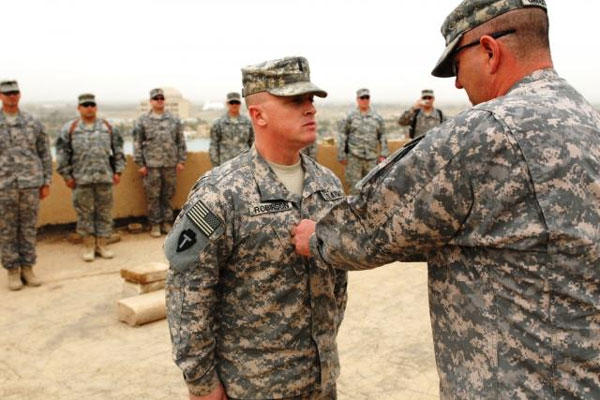Army officials have said officers can expect to remain in their current rank longer going forward as the service branch begins to restructure with the ending of American combat operations in Afghanistan and a drawing down of forces.
The previous active commissioned service needed move from first lieutenant to captain -- which includes the group of about 6,000 1st lieutenants recommended for captain by selection boards that met in April -- was 42 months, according to a report in Army Times.
That time will return to 48 months, as it was before the Army grew following the beginning of the wars in Afghanistan and Iraq. As the Army grew, it shortened the wait time in order to meet a demand for captains and majors.
The Army is now going in reverse.
The Army, which had an authorized end strength of 562,000 in 2012, expects to be down to 520,000 by the end of the current fiscal year and to 490,000 by 2017, according to figures released by the Pentagon.
That change shortened the pin-on time to major from 11 years to 9 ½ years for an officer moving through the ranks at the same rate as his or her year group peers, the paper said. That wait time is also expected to shift back.
The April selection boards recommended promotions for the Army Competitive Category, Nurse Corps, Medical Service Corps and Medical Specialist Corps.
Maj. Gen. Richard P. Mustion, commander of Human Resources Command, told the paper that the extra six months that officers can expect to serve as first lieutenants "will provide [them] more time for professional development, experience and depth from assignment opportunities prior to promotion."
Mustion is currently visiting bases to talk about the changes in promotion changes, Army Human Resou4rces Command spokesman Roy Gall said on Friday.
In addition to longer time-in-grade, the Army has also altered the process for recommending officers for promotion.
A new Officer Evaluation Report that went into effect last December is designed to make sure officers are evaluated in line with the leadership attributes and competences of current doctrine and on the correct scale, Mustion said in January.
The revised OER more clearly focuses raters on assessing the performance of an officer and focuses senior raters on the potential of officers for promotion, command and school. And that instills greater accountability within the members of a rating chain, he said.




























